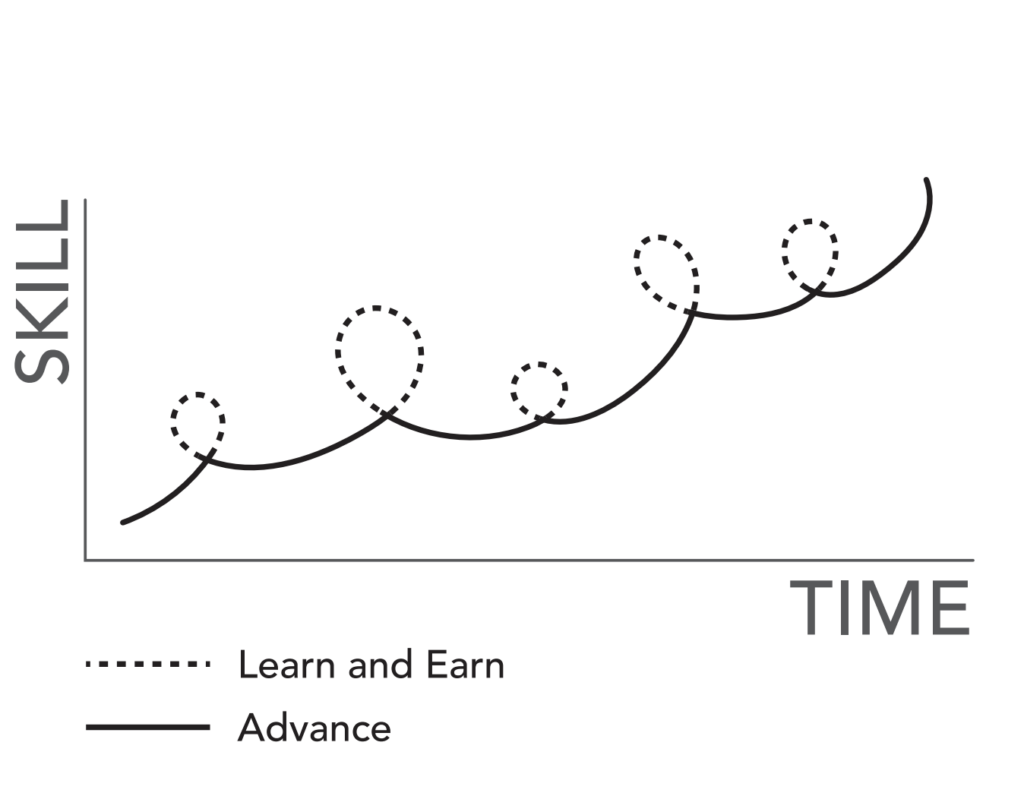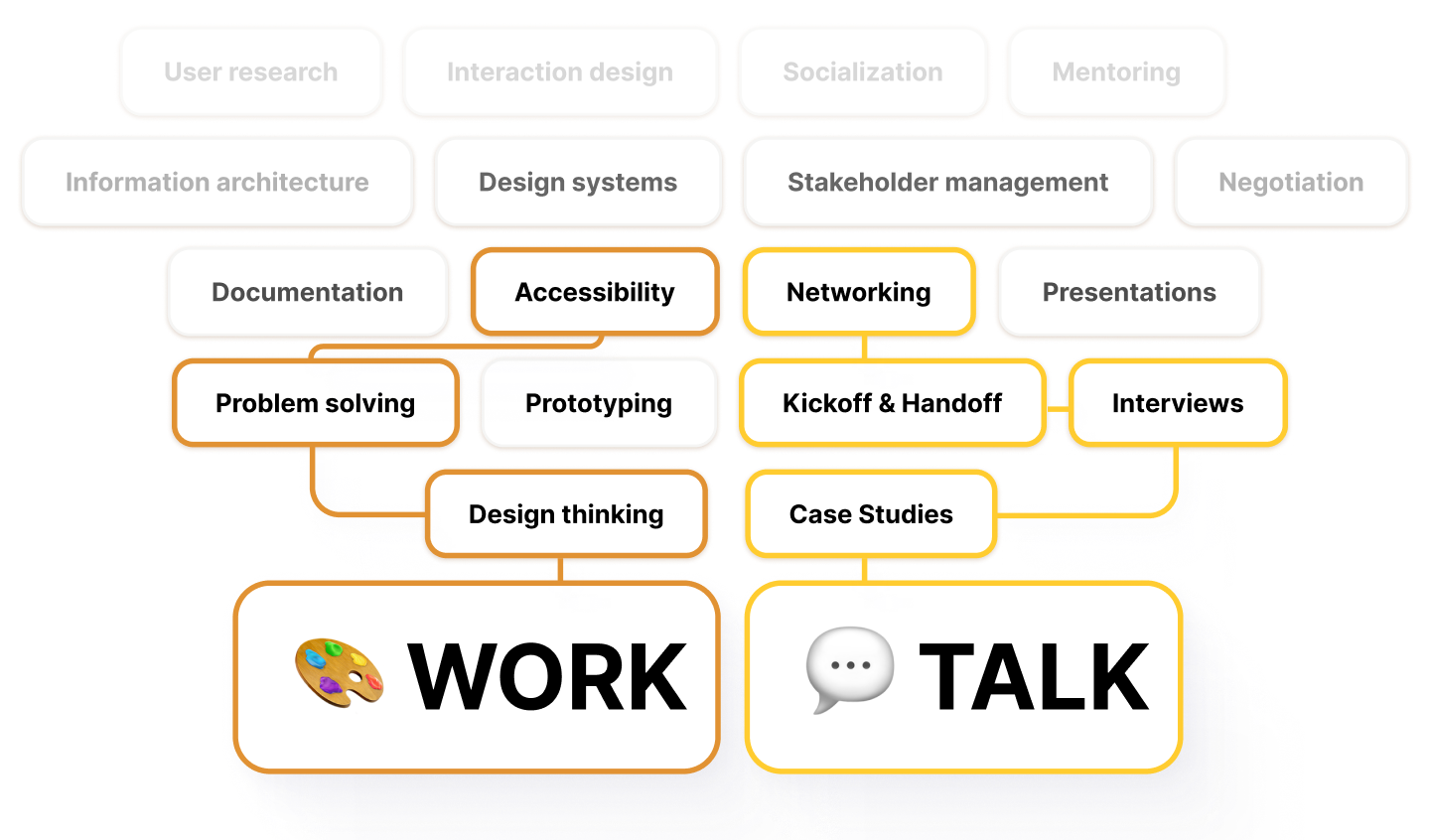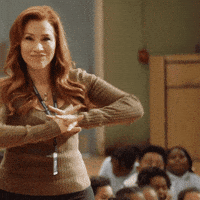Cartwheeling Uphill: Career Growth for Product Designers
I recently finished reading Jessica Lindl’s book The Career Game Loop. I picked it up out of idle curiosity—Lindl is the head of education at Unity, and I’m learning how to develop games right now. Game development is the latest haphazard learning curve in a long series of learning tangents that have no obvious relationship to my current job—product design.
Joke’s on me, what I thought was a book about game dev turned out to be a field guide to leveling up any career. Okay Lindl, I’ll bite.
(If you’re my manager and you’re reading this, I love my job, I’m not trying to run off and design games, kthanxbai)
A design career isn’t a ladder—it’s a loop: how product designers grow through work and talk
Lindl uses Game theory as a lens to presents a core idea: modern careers don’t move on a straight plane of advancement, but rather, a series of loops.
She defines these loops as “learn & earn → advance → repeat.”
It’s a great framework for capturing how product designers grow.
From The Career Game Loop
Spinning in circles?
The average millennial changes jobs every 2.75 years. It’s even higher for those in tech. If my friends and I are any indicator, we don’t switch that often because we want to. We’re in a highly competitive landscape, where none of us can expect to ride a job towards pension.
Lindl speaks to that generation—a generation wrangling a milieu of freelance, part-time and salaried work into something they can call a career. It’s a reality that shaped how I approached my own winding path—a path that, in retrospect, looks a lot like Lindl’s loops.
I’ve cobbled together dozens of different jobs, taking the long way round to product design. But it’s a route that enriched my work & thinking as a designer, and I wouldn’t trade it for the world.
Illustrator → event coordinator → instructional designer → product designer
In between those things I also tried on the hats of a fullstack developer, a swim instructor, and an arts instructor. Are you dizzy yet?
Loop-de-loop designer
In each of these industries, I experienced a period of intense learning, followed by a period of socializing what I had learned. Here’s what Lindl’s framework looked like for me:
Advance (Work): A season of growing proficiency in craft.
Learn & Earn (Talk): Craft proficiency opens space for learning and earning—leveling up my craft and following my curiosity. It also opened up space to develop an overlooked skill—space to talk about my craft. Communication opens up more earning opportunities.
Work & Talk: The Product Design Skill Tree
I’m gonna milk the video game analogy.
Both craft & communication need to develop in tandem to succeed. You can be an incredible designer, but if you can’t talk about your work, things are gonna be rough. Vice versa, you can make the snazziest presentations, but without the work to back it up, you won’t be able to keep moving.
Work
Do the work. Whatever’s in front of you. If you aren’t getting work, make shit up for yourself to do. Seriously.
Do it well. If you’re reading this and give your work 100%, 100% of the time, good for you. That’s not most of us. I get tired, distracted, or sick. But sometimes, I’m feeling great. And when that happens, I nurture that energy. Being thorough, organized and purposeful with a project feels great. And over time, it becomes a body of work I can be proud of.
Stay curious. Every project offers us something new to learn, something new to improve. Be attentive to those opportunities.
All that said, sometimes you do great work, and it still gets sidelined, dismissed or shut down. If this is happening regularly, perhaps it’s time to level up your politicking.
Talk
Kickoffs & handoffs: These are some of the best times to practice talking about your work. Handle them with intentionality. Carve out the time to plan carefully. This is your first and last impression, and those matter (check out the peak-end heuristic)
Presentations: This one confused me for a while. As a freelancer, no one asked for them. Then working in small companies, no one asked for them. So I didn’t do them. Voilá—nobody got a sticky narrative about my work. I lost out. After a while, I started doing them unprompted. And folks sat up straighter. I got more freelance work. I got further in job interviews. You need to articulate: What problems you’ve solved, how you solved them, and what the impact was. If you can’t, it’s very difficult to build trust.
Portfolio: Case👏 studies 👏 are👏 not 👏 optional. Check out the links below for more resources. (Hint: you can just re-use your presentations)
Cartwheeling up
So as designers, if we’ve looped through Advance → Learn & Earn, and how do we take that and slingshot ourselves into the next season of Advance?
We reach. On our tiptoes. Full body extension.
Step 1: Advance my work. If someone isn’t giving me work, I make it up for myself.
Step 2: Learn & earn. For that work to gain visibility, I need to be continuously learning and confident discussing it: problem solving, process & impact.
Step 3: Loop. To increase my opportunities to work (see step 1), I must access positions and projects that stretch me—that feel like a challenge.
Give it a whirl
Go for something that feels just outside your grasp. If you’re backed by a season of skill-building, and a strong ability to articulate your strengths, you’ve got some great spotters.
None of this is easy. It takes tenacity, optimism, and a heady cocktail of circumstance and luck.
I believe in you 🤗


